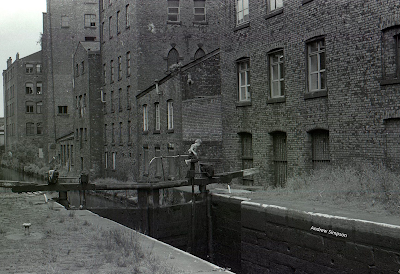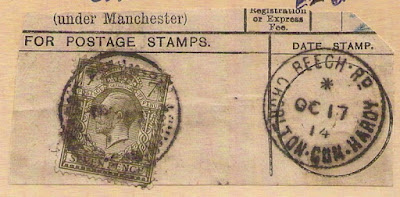It is often the seemingly trivial things
people leave behind, which offer up fascinating insights into how we lived.
And so, it is with a copy of the Chorlton
and Wilbrahamton News from the late 1930s which Maggie Watson passed over to me
last night, with the comment,
“During
our renovation we found a crumpled newspaper under a stair tread. I saved what
I could. It was obviously put there at the time the house was built in 1937.
Are these of any interest to you?”.
Which of course I was.
Her house was built by Scott the builder,
who built and lived in the house we now occupy on Beech Road.
All of which made the newspaper a bit more
interesting and more so because Maggie’s house had been the site of a farmhouse
which dated back to the early 19th century and possibly into the 18th
century.
Discoveries like Maggie’s will usually
confirm things we already knew, push back dates of buildings, and open up new enquiries.
So, the advert for the Grange Laundry on
Beech Road
“A Really Good Laundry”, pointed to the uninterrupted continuity of
the business through the first half of the last century, while Thomas’s Coaches
at 4 Chorlton Green pushed back the date when this new industry has a presence
beside the old village green.
And that brings me to Madam Jethro …..
Gifted Clairvoyant, who must surely be worth a search.
The entry in the small adds column
announces “Madam Jethro, Gifted Clairvoyant .
Book your appointments please.
Hours 2 to 8pm. Borderland every
Thursday”, but it offers no clues as to
where she lived, leaving me just to reflect that with The Great War less than
20 years in the past there will have been many wondering whether Madam Jethro could provide a link to a lost
relative.
The adds also shine a light on the
attitudes of the day, when a property owner could advertise
“Large Unfurnished
Room; Lady,- 16, High Lane, Chorlton” and the Riding’s Cycle company with a
branch at 363 Barlow Moor Road, could take a quarter page advert showing
pictures of eleven women with the caption “More Pretty Entrants in Riding’s
Great Northern Cycle Queen Contest”.
What strikes you are the number of adverts
for electrical repair shops, along with such services as “Have your Car
thoroughly cleaned and “Simonized” by competent man” and “Mrs. M. Craddy, ‘Spirella’
Corsetiere, Demonstrations in Client’s Own Home, by Appointment. At home, Saturday, 10 to 6. – 2 Chelford
Road, Darley Park, Manchester 16. Tel.
Chorlton 3271”.
Sadly, the news and features pages were not
retained by who ever secreted the bits that Maggie found and that is a loss,
but there is more than enough to provide us with a picture of Chorlton-cum-Hardy
in 1937.
I can’t be sure at present who secreted the
bits of newspaper, but it is odds on it was one of Whitelegg family who were
there in 1939. Mr. Reginald Whitelegg was born in 1884, his wife Millicent two years
later and the children, George and Millicent were born in 1908 and 1919.
Given that Reginald was a house painter
and his son a bricklayer, it is just possible they worked for or worked with
Joe Scott who built their house, and was known to reward employees and friends
with favourable terms when renting out the houses he built.
And so tomorrow and into the next week I
think I shall wander across the adverts, recording the cost of items, the names
of some local shop keepers, along with a sideways look at the cinemas and the films
being shown on the first week in July.
Leaving
me just to mention that Gladiator Photoworks, which operated from 2a Keppel
Road and boldly claimed that “Better Snaps Cost No More Bring Your Films Where
Your Snapshots Are Actually Made It costs no more to have your snaps finished by
Professional Photographers Snapshot Specialists".
Location; Chorlton
Pictures; from The Chorlton and Wilbrahamton News, July 16, 1937, from the collection of Maggie Watson
























.jpg)
























